Motherboard Layout & PCB Features
The layout of the GIGABYTE X570 Gaming X is surprisingly well thought out. Granted, layouts are easier on motherboards with fewer integrated features. That said, there are still issues that can arise on boards at any price. This one avoids issues with CMOS battery placement or poor connector placement. Connectors are well thought out and I can foresee few if any issues in most builds.
The GIGABYTE X570 Gaming X has four fan headers. One of which is for dedicated water cooling use. There are two connectors near the CPU socket, right where you would expect it. There is another one near the rear I/O panel area which is common place. This one is often used for rear exhaust fans in many system chassis. There is also a final connector right next to the 8-pin CPU power connector. All of the fan headers are 4-pin and controllable via DC or PWM modes. There are also six onboard temperature sensors for monitoring.
Additionally, lighting enthusiasts will find 5x RGB LED headers of varying types located at different points around the PCB. There are 3x standard RGB LED headers and two addressable RGB headers. There are no water flow sensor headers or external temperature sensor connections here. You will not find onboard power, reset or other controls or even voltage checkpoints on the PCB. You don’t even get the usual diagnostic or POST code LED display. That’s probably the only thing I take issue with. You don’t even get basic troubleshooting LED’s. These are not unexpected sacrifices, but on the surface, it almost seems like GIGABYTE cut too much out of the design.
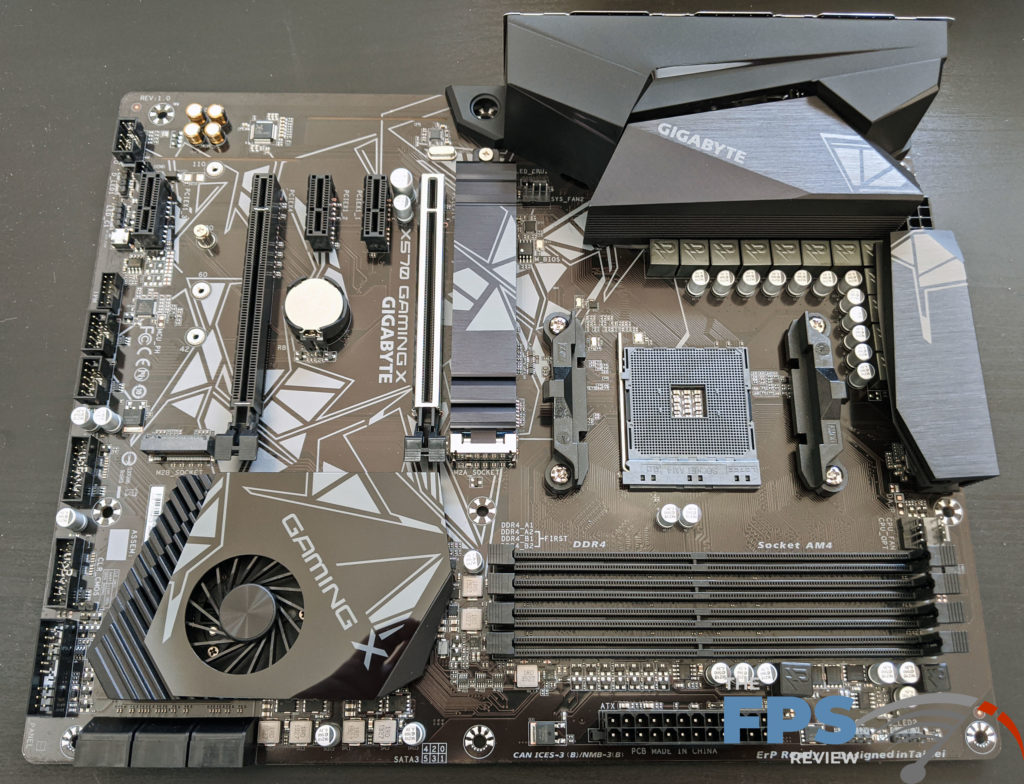
The PCB is actually rather thick and sturdy-feeling. One thing GIGABYTE motherboards often impress me with is their build quality. To that end, GIGABYTE’s Ultra Durable feature isn’t so much a single feature, but a collection of design elements designed to make the motherboard more robust and well….durable.
The GIGABYTE X570 Gaming X has it’s Q-Flash BIOS feature, which allows the flashing of the BIOS without a CPU or even RAM is installed in the system. It features solid pin power connectors that allow higher sustained voltage and thus, higher heat. The motherboard also features steel reinforcement which it refers to as “Ultra Durable PCIe Armor.” It’s all marketing speak for a metal brace on your primary PCIe x16 slot. However, due to the board’s price point, you only get this on the primary PCIe x16 slot.
Power Delivery
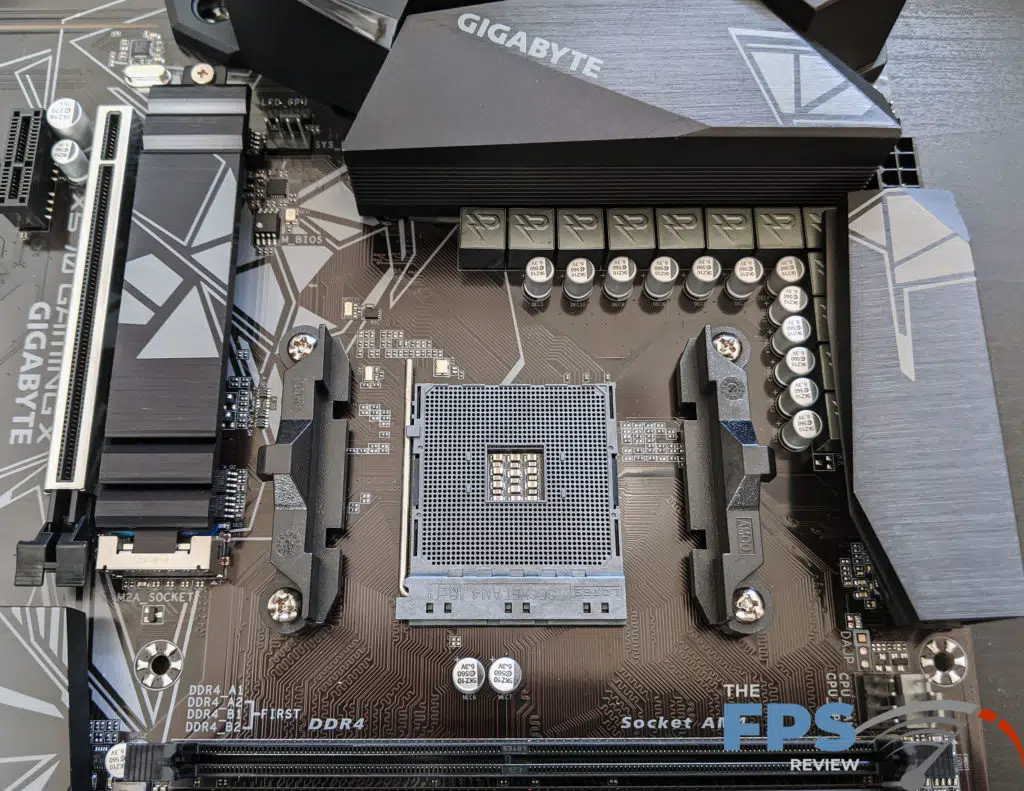

GIGABYTE’s X570 Gaming X features a digital VRM with 10+2 phase power utilizing lower RDS(on) MOSFETs. It features 10 phases for vCore and 2 for SOC voltage. In truth, this is a 5 phase design employing ISL6617 phase doublers which support both interleaving and current balancing. These doublers are what allow the native 5 phases to reach a 10+2 phase configuration. This isn’t as beefy a design as its upper echelon offerings but this is a more than capable design that can power your 3950X with ease. The board features an ISL6974 7 phase voltage controller running in 5+2 phase mode.
You will also notice that there is only one 8-pin CPU power connector. Given that this can supply around 380w of power, it’s enough for even the 3950X.
The heat sinks that cover the MOSFETs are rather beefy and aesthetically pleasing. They look like they are from a higher-end motherboard. They do not feature heat pipes but work rather well. Under full load and some time to allow for heat soak, the one to the right of the CPU socket only hit 111F while the one behind the CPU hit temperatures of 119F. This was even while running a 3950X overclocked, so not bad for a motherboard in this price point.
Memory Support
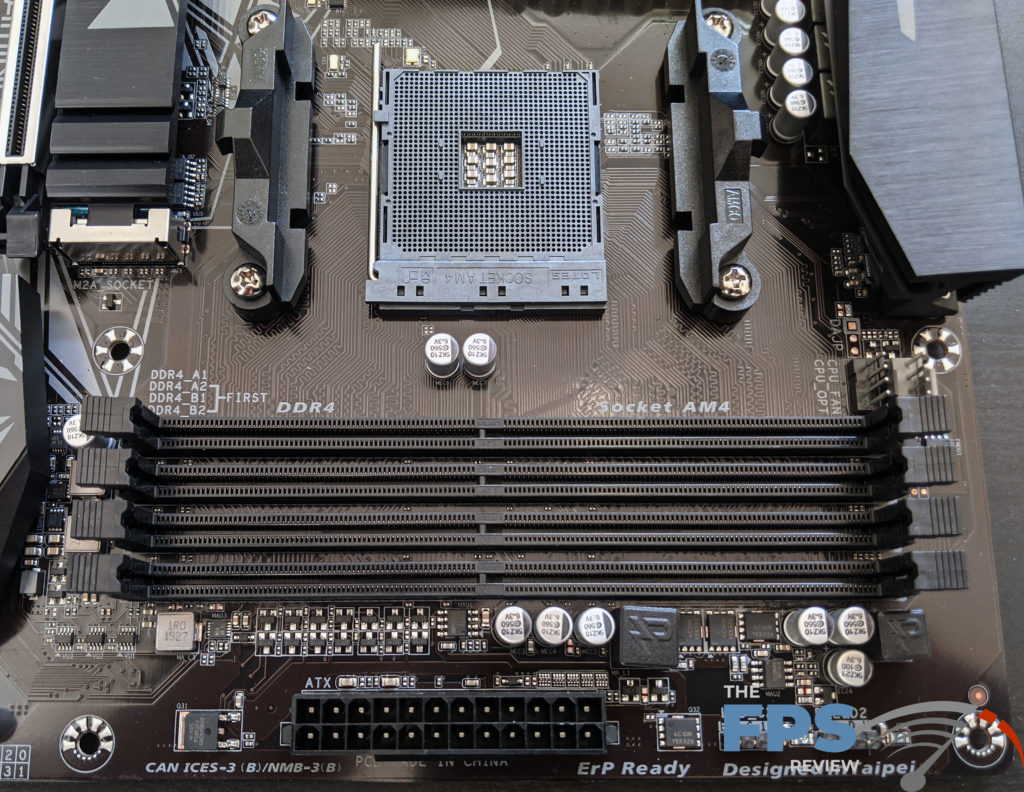
There are 4 288-pin DDR4 DIMMs supporting up to 128GB of memory in a dual-channel configuration. The DIMM slots are not color-coded to denote dual channel operation, but there are visible markings on the PCB which help denote the proper installation configuration. The slots utilize two locking tabs for memory retention.
GIGABYTE designed the memory subsystem with a daisy chain topology which is normal for X570 motherboards. It also uses a single phase power configuration, but it matches the configuration of several higher-end boards so this shouldn’t be an issue.
Expansion
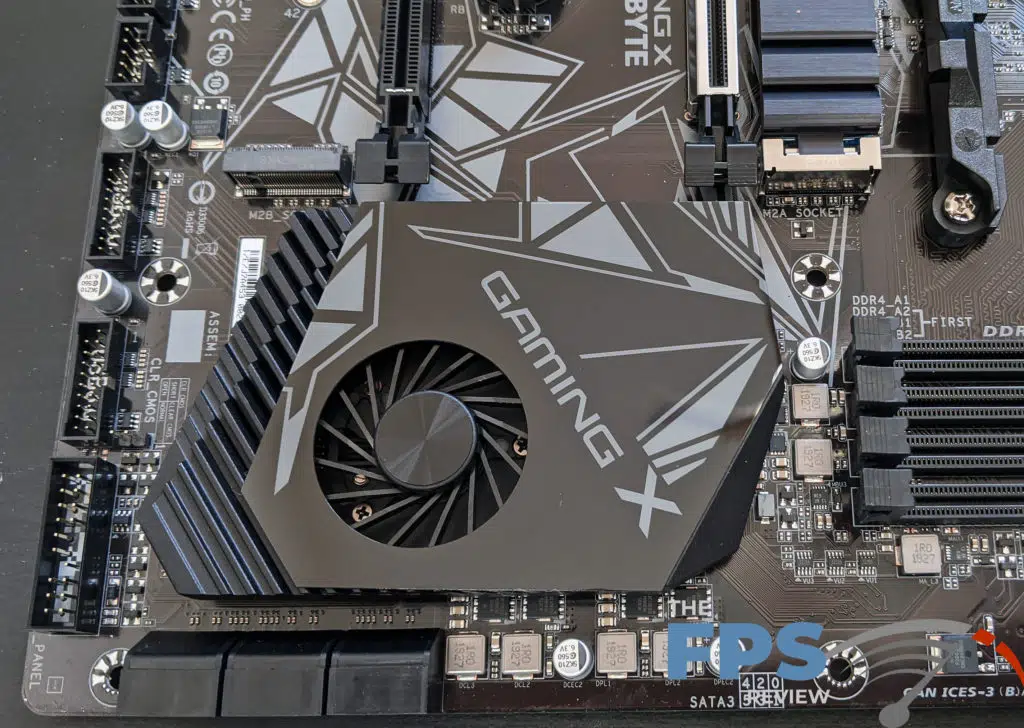

The chipset is situated in the usual location in the bottom right-hand corner of the motherboard’s PCB. It is cooled by an active heat sink and fan. This is standard on most X570 motherboards. As is the case with others on the market, the fan is a smart fan which only operates when thermal conditions warrant it. You hear the fan initially on startup but it quickly shuts down when the OS loads. I’ve been running an AM4 setup myself and I never hear the fan even when I’m gaming, encoding video or anything else. In our testing, the X570 Gaming X was no different.
The heat sink and fan are thin enough that they don’t create any issues with the installation of expansion cards. You will also find 6x SATA 6Gb/s ports for traditional SATA devices directly in front of the chipset cooler.

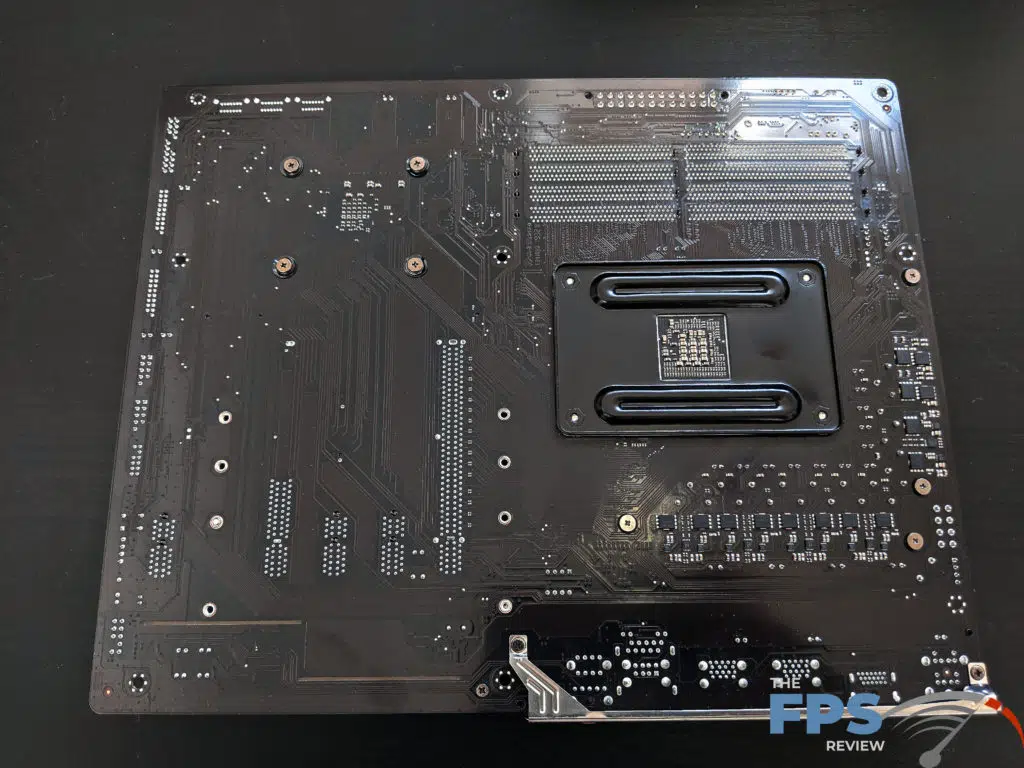
The expansion slot area is well thought out. I like the placement of the M.2 slot above the primary PCIe Express slot. The expansion slot area does support Crossfire in both Quad-GPU and 2-Way configurations. The expansion slot area features 2x PCIe x16 slots and 3x PCIe x1 slots. This allows for a x16/x0 or a x16/x4 configuration. The PCIe x1 slots are all PCIe 4.0 compliant depending on your installed CPU’s PCIe controller.
Back Panel I/O
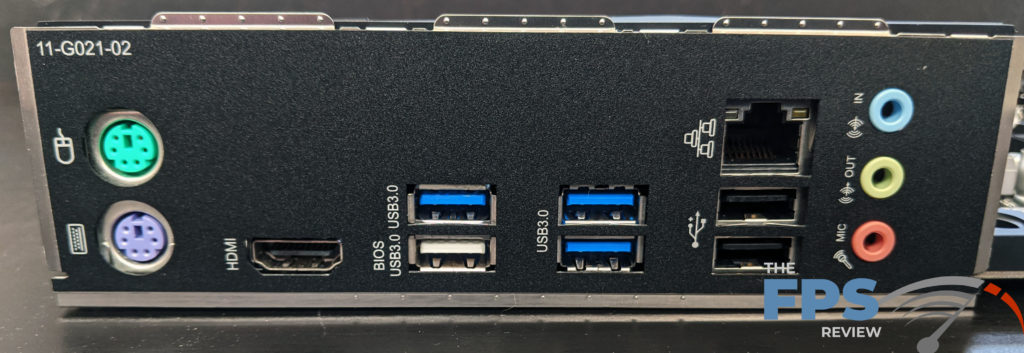
As you can see, the I/O panel is rather empty. There aren’t too many ports here and this is where you can see the evidence of the GIGABYTE X570 Gaming X’s budget origins. You get 4x USB 3.2 Gen 1 ports and 2x USB 1.1/2.0 ports. There are dedicated PS/2 keyboard and mouse ports as well as an HDMI connection for AMD’s APU’s as the standard processors lack the iGPU feature. We also have a single RJ-45 LAN port and three audio jacks.
Despite being rather inexpensive, GIGABYTE chose to integrate the I/O shield which I can appreciate. However, there is no optical output and the audio jacks aren’t gold plated, nor do they have the usual additional connections for analog output or input. You get a single microphone input, line-in and a line out. It’s a no-frills setup, but it’s generally well-executed.
